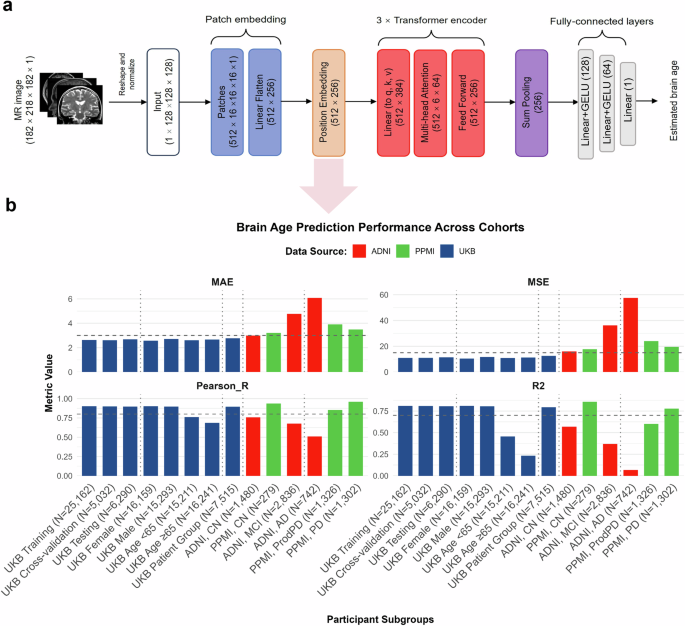Analysis of Infant Mortality in Arkansas and its Alignment with Sustainable Development Goals
Introduction: A Challenge to SDG 3
An analysis of infant mortality in Arkansas reveals a critical public health issue that directly impacts the achievement of the United Nations Sustainable Development Goals (SDGs), particularly SDG 3 (Good Health and Well-being). The state’s infant mortality rate is substantially higher than the U.S. national average, with its ranking worsening from the fifth-worst (2013-2015) to the third-worst (2022). A study linking Arkansas Department of Health data with All-Payer Claims Database information for Medicaid-covered infants between 2013 and 2016 provides key insights into the causes and contributing factors, highlighting significant barriers to fulfilling SDG Target 3.2, which aims to end preventable deaths of newborns and children under five.
Key Findings and Implications for SDG Targets
The research identified specific areas of concern that underscore the urgency of targeted interventions to meet global health goals. The findings reveal systemic failures in preventative care and highlight leading causes of death that require focused public health strategies.
- Primary Cause of Death: Sudden Infant Death Syndrome (SIDS) was the leading cause of mortality, responsible for 55.3% (78 out of 141) of deaths in the study population. This points to a critical need for public education and support systems for safe infant care practices, a foundational component of achieving SDG 3.
- Healthcare Utilization Patterns: Over half of the infants (53.3%) required inpatient or hospital services prior to death. This indicates that while these infants were engaged with the healthcare system, the interventions were insufficient to prevent mortality, suggesting a need for improved quality and continuity of care.
- Gaps in Preventative Care: A significant finding across all cause-of-death groups was the prevalence of missed opportunities for infants to receive recommended well-child visits. This failure in providing consistent, preventative healthcare is a direct impediment to progress on SDG Target 3.2 and reflects a systemic weakness in the primary care infrastructure.
Socioeconomic Disparities and Broader SDG Connections
The study’s focus on infants covered by Medicaid links the high mortality rate to wider socioeconomic challenges, connecting the issue to other key SDGs.
- SDG 1 (No Poverty) and SDG 10 (Reduced Inequalities): By concentrating on a low-income population, the data illustrates how poverty and inequality create significant barriers to positive health outcomes. The disparity between Arkansas’s rate and the national average is a stark example of the health inequities that SDG 10 seeks to eliminate. Addressing infant mortality in this context requires integrated strategies that tackle both health system failures and the underlying socioeconomic determinants of health.
Analysis of Sustainable Development Goals in the Article
1. Which SDGs are addressed or connected to the issues highlighted in the article?
-
SDG 3: Good Health and Well-being
- The article’s central focus is the high infant mortality rate in Arkansas, which is a primary health indicator. It directly addresses the goal of ensuring healthy lives and promoting well-being for all at all ages, particularly for the most vulnerable population group—infants. The discussion of causes of death like SIDS and healthcare utilization falls squarely under this SDG.
-
SDG 10: Reduced Inequalities
- The article specifies that the study focused on “infants covered by Medicaid.” Medicaid is a public health insurance program for people with low income. By isolating this demographic, the article highlights a significant health disparity and inequality in outcomes between different socioeconomic groups. The disproportionately high mortality rate in this group points to systemic inequalities in access to and quality of healthcare.
2. What specific targets under those SDGs can be identified based on the article’s content?
-
Targets under SDG 3: Good Health and Well-being
- Target 3.2: “By 2030, end preventable deaths of newborns and children under 5 years of age…” The article’s entire subject is infant mortality (death within the first year of life), which is a core component of this target. The finding that SIDS was the primary cause of death and that there were missed well-child visits points to preventable deaths that this target aims to eliminate.
- Target 3.8: “Achieve universal health coverage, including… access to quality essential health-care services…” The finding of “missed opportunities for infants to receive appropriate well-child visits” directly relates to a failure in providing access to quality essential healthcare services for this vulnerable population, a key aspect of achieving universal health coverage.
-
Target under SDG 10: Reduced Inequalities
- Target 10.2: “By 2030, empower and promote the social, economic and political inclusion of all, irrespective of… economic or other status.” The high infant mortality rate among the Medicaid-covered population, as highlighted in the article, is a stark indicator of health inequality based on economic status. Addressing this issue is essential for achieving the goal of inclusion and equal opportunity for positive life outcomes.
3. Are there any indicators mentioned or implied in the article that can be used to measure progress towards the identified targets?
-
Indicators for SDG 3 Targets
- Infant Mortality Rate: This is explicitly mentioned and is the primary metric discussed. The article states Arkansas’s rate is “significantly higher than the national average” and its rank worsened from “fifth-worst” to “third-worst.” This directly measures progress (or lack thereof) towards Target 3.2.
- Causes of Death: The article identifies “Sudden infant death syndrome (SIDS)” as the primary cause. Tracking specific causes of death is a crucial sub-indicator for understanding and preventing infant mortality.
- Healthcare Utilization Rate: The article implies this indicator by stating, “missed opportunities for infants to receive appropriate well-child visits.” A measurable indicator would be the “percentage of infants receiving recommended well-child visits,” which would track access to essential services under Target 3.8.
-
Indicator for SDG 10 Target
- Infant Mortality Rate Disaggregated by Socioeconomic Status: The article’s methodology of linking death certificates to the “Arkansas All-Payer Claims Database” to identify “infants covered by Medicaid” is a direct application of this indicator. By analyzing the mortality rate specifically for a low-income group, it measures the extent of health inequality, which is necessary for tracking progress towards Target 10.2.
4. Summary Table of SDGs, Targets, and Indicators
| SDGs | Targets | Indicators |
|---|---|---|
| SDG 3: Good Health and Well-being |
3.2: End preventable deaths of newborns and children under 5 years of age.
3.8: Achieve universal health coverage and access to quality essential health-care services. |
– Infant Mortality Rate (Explicitly mentioned as being the third-worst in the U.S.). – Cause-specific mortality rate (SIDS identified as the primary cause of death). – Percentage of infants receiving recommended well-child visits (Implied by “missed opportunities”). |
| SDG 10: Reduced Inequalities | 10.2: Promote the inclusion of all, irrespective of economic or other status. | – Infant mortality rate disaggregated by socioeconomic status (Implied by the study’s focus on infants covered by Medicaid). |
Source: achi.net







